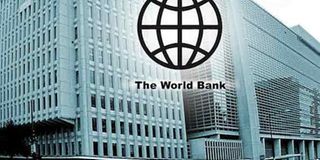World Bank announces $22.5billion for climate in Africa

What you need to know:
- World Bank will provide funding of about $22.5 billion with more than half of it devoted to supporting climate adaptation and resilience in Africa.
Dar es Salaam. To scale up support for both climate adaptation and mitigation in Africa, the World Bank (WB) will provide $22.5 billion for five years from 2021 to 2025.
This is according to a statement released by WB during the third One Planet Summit that is being convened by President Uhuru Kenyatta of Kenya, President Emmanuel Macron of France, Interim President of the World Bank Group Kristalina Georgieva and the deputy secretarygeneral of the United Nations, MsAmina Mohammed.
The funding is part of the World Bank Group’s 2025 targets to step up Climate Action, launched in December 2018 during the UN’s COP24 in Poland.
More than half of the $22.5billion financing will be devoted to supporting adaptation and resilience in Africa. This will amount to about $12-$12.5 billion over five years from 2021 to 2025.
“People across Africa are already experiencing the growing impacts of climate change. This region is particularly vulnerable to increasing floods, droughts and destructive storms,” said interim president of the World Bank Group, Kristalina Georgieva.
He further added: “We have to do more and do it faster, or millions of people could be plunged into poverty. That’s why the World Bank is providing more money to build resilience and help communities cope with the effects of climate change in Africa.”
In addition, the World Bank will carry out intensive Nationally Determined Contributions (NDC) engagements with Rwanda and Kenya, under the framework of the NDC Partnership, and with generous support from Germany’s BMZ.
The engagements will help accelerate the implementation of, and raise the level of ambition for, their NDCs by supporting systematic mainstreaming and institutionalisation of climate adaptation and mitigation across and within key development sectors and governance levels.


